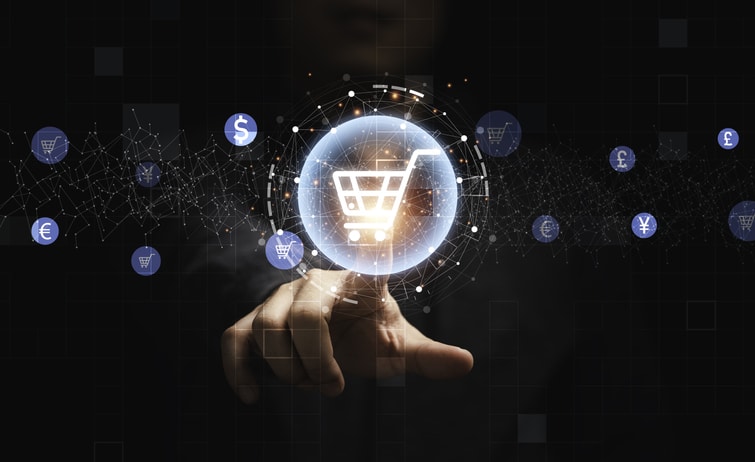With skyrocketing paid social costs and customers more discerning than ever, how do you stand out from your competitors and win your customers’ attention?
The answer: omnichannel retailing.
By being present wherever your customer engages and delivering the right content to the right person at the right time, omnichannel retailing has helped retail brands grab attention, build engagement, and secure loyal, repeat customers.
But if there’s one constant in the world of B2C marketing, it’s that customer expectations are always rising. And as more brands start to improve their omnichannel marketing strategy, the less unique and impactful your strategy will be.
If you want to stand apart from your competitors and continue to create experiences that keep customers engaged, you need to stay ahead of the curve. So, what does the future of marketing hold for omnichannel retailing, and how can you hedge against incoming changes? Read on to find out.
What is omnichannel retail?
Omnichannel retail is the natural successor to multichannel and cross-channel retail, focused on delivering personalized, relevant experiences, regardless of where customers choose to interact with your brand.
Multichannel retail involves marketing products across multiple channels, but none of these channels are necessarily connected.
Cross-channel retail takes things one step further by connecting multiple marketing channels to give customers more relevant experiences. However, none of these channels are fully integrated.
Omnichannel marketing bridges the gaps of multichannel and cross-channel retailing by integrating all of a brand’s online and offline marketing channels. The result? A single view of customers that empowers brands to deliver relevant personalized content in real time, regardless of where the customer chooses to engage.
The present state of omnichannel retail
Customers are demanding, and competition is ruthless. In the disrupted world of retail where bricks and mortar stores have been forced online, how can brands simultaneously stand out and meet audience expectations?
The answer lies in overcoming the challenges of omnichannel retail and delivering an integrated strategy that’s focused on a personalized, connected experience.
What do the numbers say?
When omnichannel marketing first started to emerge in recent years, brands who got ahead of the curve saw incredible results, with some of the highest-performing omnichannel marketing strategies touting 89% customer retention rates (Aberdeen Group).
However, as more and more brands shifted from multichannel and cross-channel to an omnichannel approach, customers grew desensitized. Omnichannel customer engagement starting to become expected, rather than exceptional. So the cost to retailers of not being omnichannel is lost customers.
Relevant, personalized customer experiences have stopped being an “added bonus”. They’re now a necessity for brands that want to acquire and retain customers for the long-term.
Today, 87% of retailers believe omnichannel is a vital part of retail marketing, and over 90% either have an omnichannel strategy in place, or are planning on implementing one soon. And the more stores that adopt it, the more dialled in your strategy has to be to deliver the same impact.
However, despite the spotlight focused firmly on omnichannel retailing (Source: prnewswire.com):
- Only 8% of brands report as having mastered it
- A further 12% have the right software setup to launch an omnichannel strategy
- Over half of surveyed retailers cite their strategy as a ‘work in progress’
- 19% consider it a ‘struggle’ or a ‘pipedream’
While the intent on omnichannel implementation exists, for the majority of retail brands, execution still falls short of the mark.
The evolution of the customer journey
How does the customer journey impact sales, and are customers who engage across multiple touchpoints more valuable to retailers?
Harvard Business Review set out to answer this question.
In a survey of 46,000 US shoppers conducted between 2015-2016, HBR found that:
- Only 20% of customers were store-only shoppers
- Only 7% of customers were online-only shoppers
73% of shoppers engaged with retailers across multiple channels during their buyer journey, but that’s not all. They’re worth more to brands too.
Omnichannel customers were found to spend 4% more in-store, with every additional touchpoint increasing the amount spent, and 10% more online.
Discover why thousands of marketers trust Emarsys to drive 1:1 omnichannel customer engagement and accelerate business outcomes.
What is the future of omnichannel retailing?
With the increasing adoption of omnichannel retailing and the impact it can have on customer experience and customer lifetime value, retail brands have a clear choice ahead of them – keep up, or be left behind.
As a result, keeping a finger on the pulse of omnichannel retailing couldn’t be more important. Here’s where we predict omnichannel to be heading:
Less digital, more “phygital”
If retail brands had cracks in their omnichannel strategies, the rapid democratization of retail brought on by the pandemic only exposed them further.
The pandemic created a barrage of change that hit the world of retail hard and fast, and for the first time, power was given to the customer.
With a wealth of online options at their fingertips, customers were suddenly given an abundance of choice over how and when they interacted with brands — and which brands they interacted with.
Whether it’s in-store or online, your customers want the choice and flexibility of where they engage with your brand. It’s time to go “phygital.”
What is phygital marketing?
Phygital marketing is the combination of digital experiences with physical ones to deliver an immersive, engaging experience to customers — i.e., hybrid customer experiences — who flick between bricks-and-mortar and online shopping. While ecommerce is forecasted to grow 50% from 2021-2025 to $7.3 billion, customers will still use mobile to enhance their in-store experience.
By taking the convenience and flexibility of online shopping and combining it with the sensory engagement of in-store shopping that customers still seek out, brands can develop a phygital marketing experience that combines the best of both.
Disconnected experiences will damage your bottom line
Customers are choice rich and time poor, and that will only increase.
You’ll no longer be able to squeeze customers through buyer journeys that they don’t want to go on. If the experience is anything less than seamless, customers won’t persevere — they’ll leave, and purchase with one of the many competitors vying for their attention who have invested in an integrated omnichannel experience.
Retailers that understand this change will shift their focus to the customer and meet them where they choose to engage.
On average, your customers will engage with your brand across 6 touchpoints before completing a purchase. Historically, channels like email and social media have been used to market products and push customers to complete purchases online, in-store, or in-app. But this is expected to shift from channel-hopping in order to complete a purchase to in-channel buying.
This move is already beginning to emerge. E-commerce platforms like Shopify have already rolled out tools to help retailers sell their products directly within TikTok, giving customers a seamless experience that allows them to buy in the moment.
Customer data will be the new currency
Data is the powerhouse of omnichannel retailing, because it’s the foundation of any and all personalized experiences you create. This presents retail brands with challenge and opportunity in equal measure.
Correctly manage your cross-channel customer, product, and sales data, and you’ll build a unified customer profile that gives you a deep understanding of your customers’ wants, needs and motivations.
Leave breaks in your data chain, and you’ll increase the chances of disconnected, clunky customer experiences damaging audience perceptions.
Focus on the customer, and be braced for change
Moving forward, the only constant will be changing customer expectations. Your customers will constantly question whether engaging with and purchasing from your brand is a good use of their time, as well as their money.
Value-based customer loyalty is increasing with younger generations, who factor their personal moral and ethical values into which brands they buy from. If their values align with yours, you can reap the rewards of long-lasting brand loyalty.
In a world where customers are questioning whether their money is well spent with your brand, establishing trust by sticking to values that resonate with them will be a powerful way to build sustainable, repeat revenue.
Some brands are already leading the way, and Patagonia got well ahead of the curve. Since 1985, the clothing retailer has played into their target audience’s passion for the enviroment and sustainability with their 1% for the planet campaign.


Since its inception, 1% for the planet has donated over $140 million for grassroots environmental groups focused on the preservation and restoration of the planet — a fact that is displayed front and center in their marketing and isn’t lost on their target audience.
Fast track your path to omnichannel marketing
Your competitors are aware of the power of omnichannel marketing — but as we’ve seen, only 8% of them have mastered it.
This presents your business with a huge opportunity, and with the right omnichannel customer engagement platform, you can create experiences that grab customer attention, build engagement, and create loyal brand advocates.
At Emarsys, we give more power to the marketer to help make this happen. By unifying your customer, product and sales data both historically and in real-time, Emarsys helps brands create relevant, 1:1 personalized engagements in real-time.
The future of omnichannel retail will be here soon. But to secure the future of your brand, ensure you have the right technology in place to deliver the 1:1 experiences that will keep your customers coming back for more.
Discover how Emarsys can accelerate 1:1 omnichannel marketing success for your brand.












